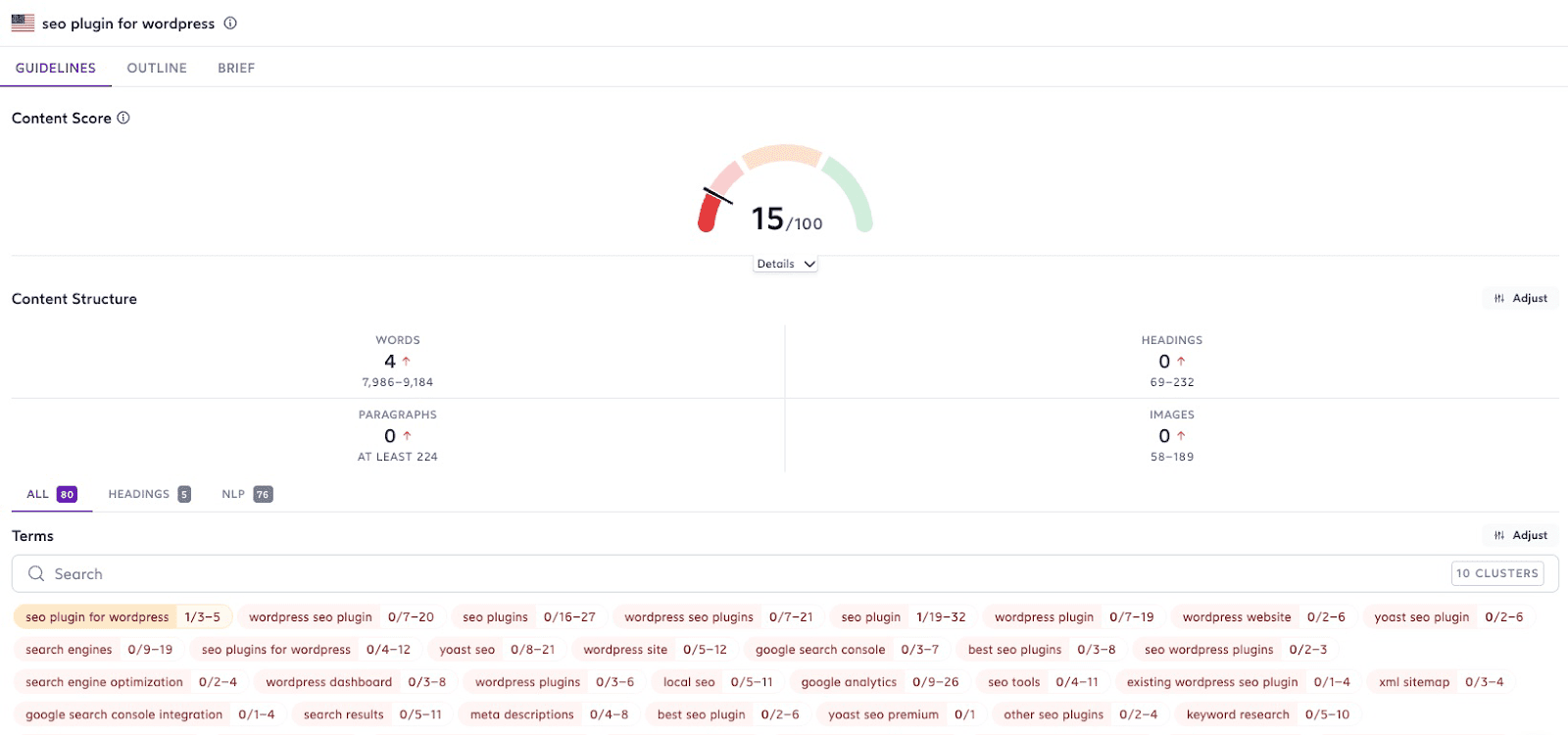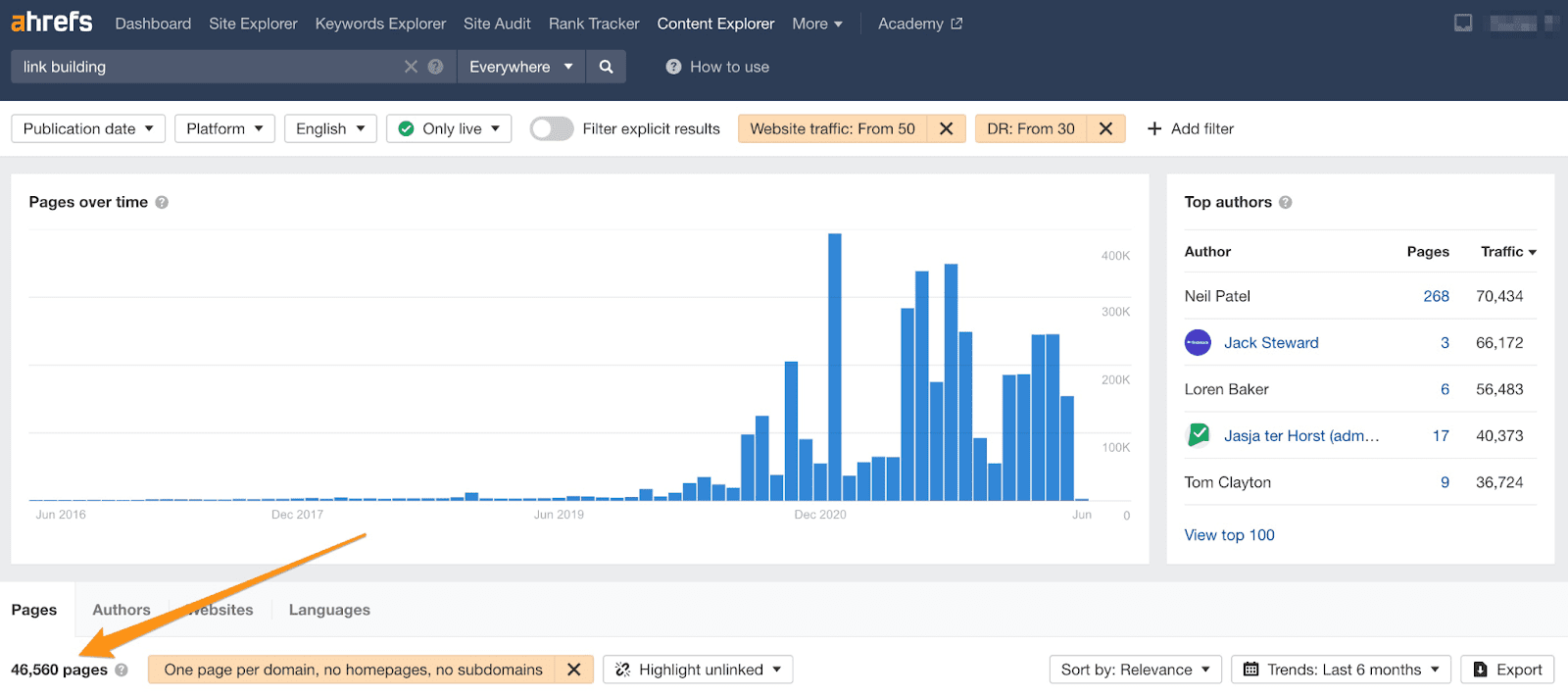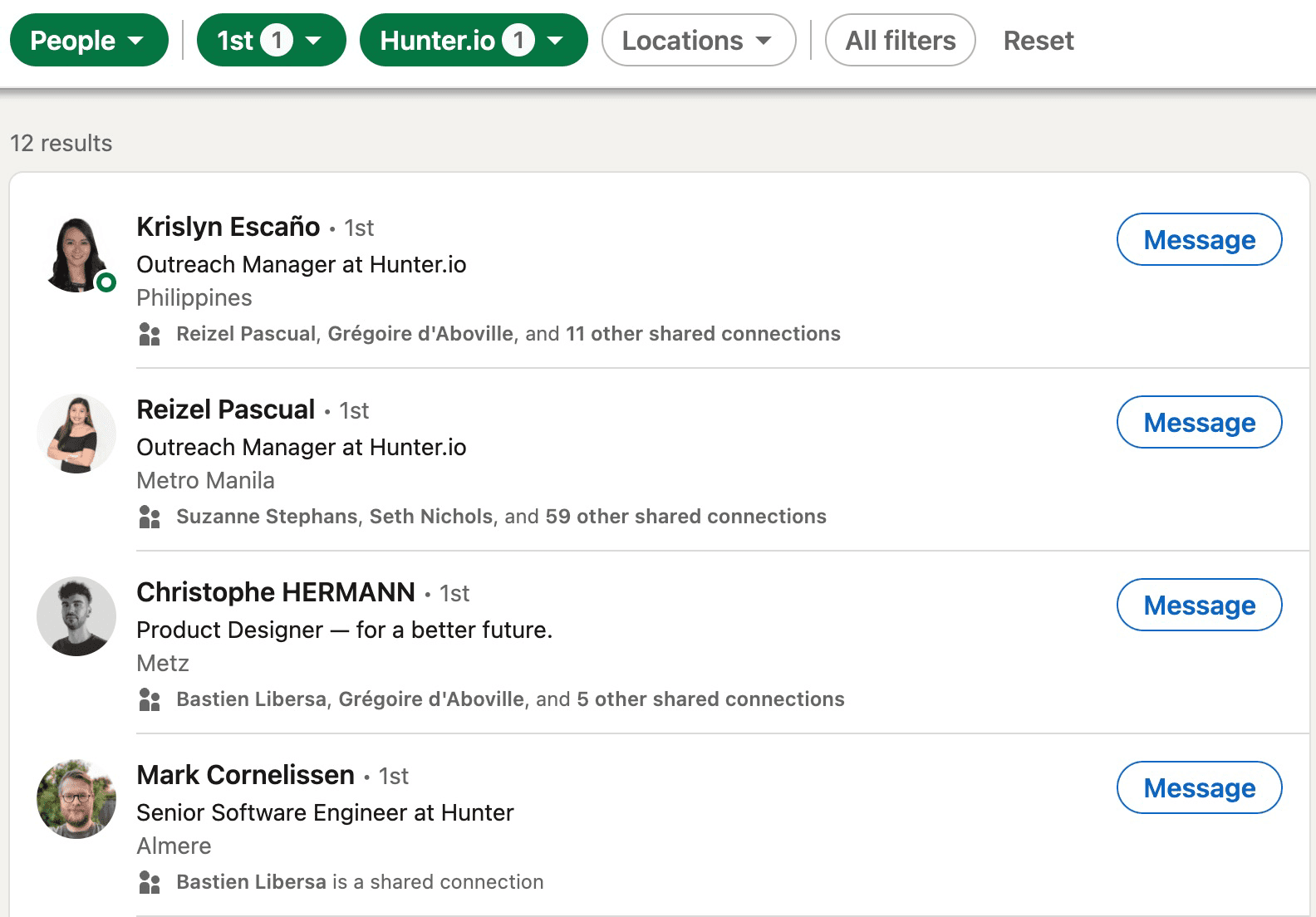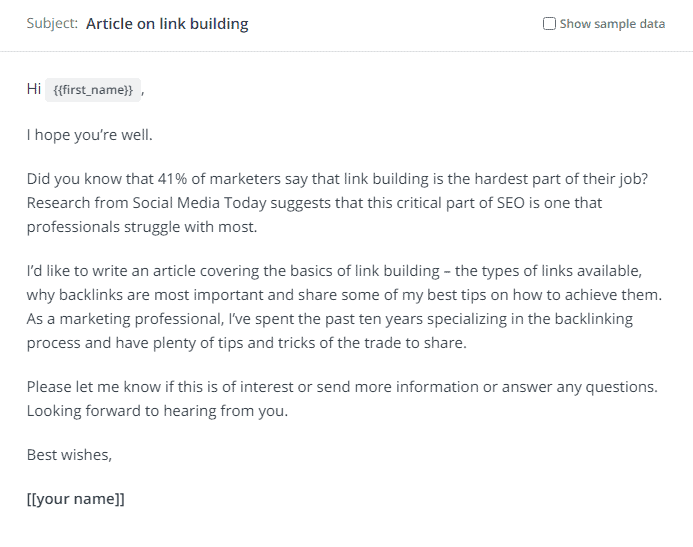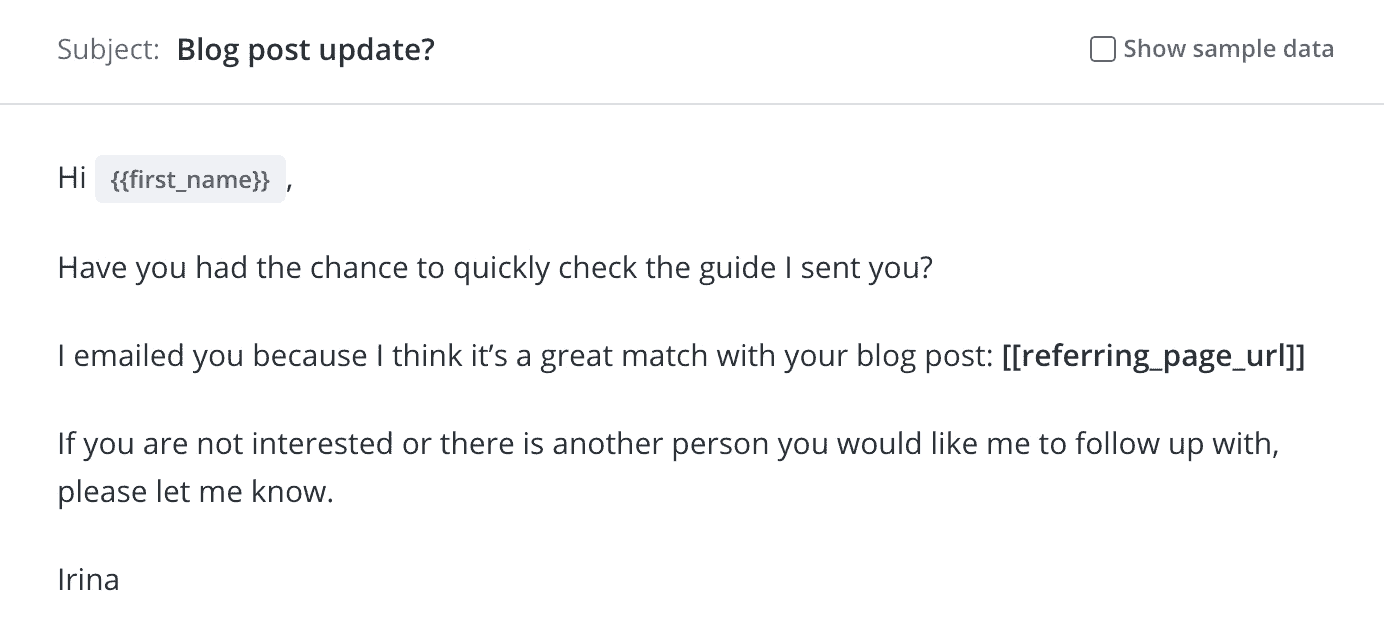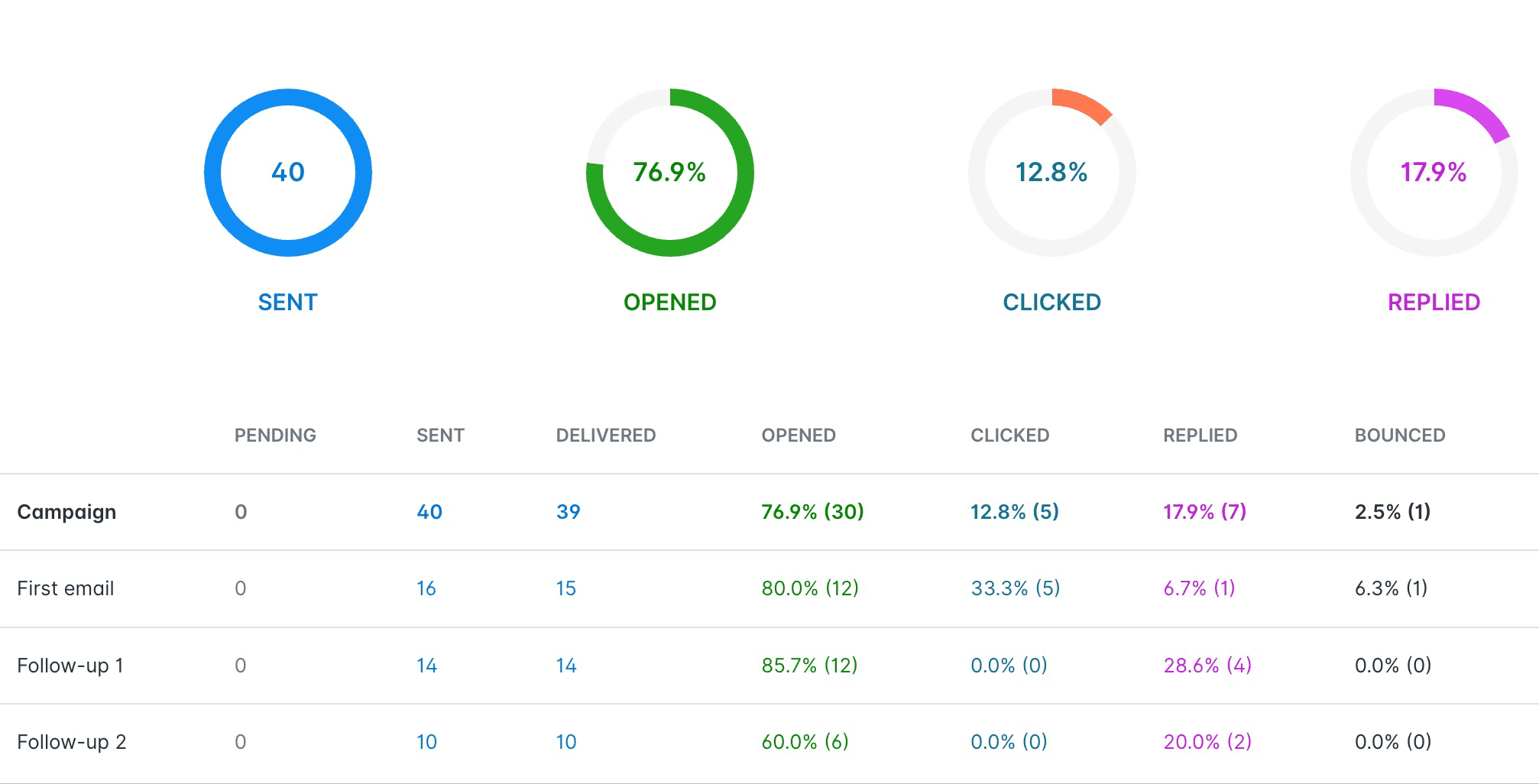Disclosure: Some of the links you’ll encounter are affiliate links. If you click and buy something, I’ll get a commission. If you’re reading a review of some precious metals company, please understand that some of the links are affiliate links that help me pay my bills and write about what I love with no extra cost to you. Thank you!
Have you ever considered cold email outreach as an effective way to boost your content visibility? If not, this article will probably change your mind. We know that producing in-depth content isn’t easy. But if you start promoting it and boosting its SERPs via personalized cold outreach emails, you are automatically one step ahead of your competitors.
Recent research shows that personalized emails have higher open and click-through rates (23% and 3.2%) than standard ones (20% and 2.4%). If you add that cold emails have one of the highest ROIs (3800%), this approach simply can’t be underestimated.
And the good news? Percentages are even higher when promoting your content instead of your products or services.
This is why, in the following text, we will explore the most valuable tips that will help you boost your content visibility by utilizing cold email outreach.
Table of Contents
Benefits of Cold Email Outreach in Promoting Your Content
When it comes to cold email outreach, the efficiency of a strategy has everything to do with personalizing your email sequence and pitching to the right person. If you follow some straightforward steps, cold emails will benefit your content in multiple ways:
- Expand your audience: The more segmented and personalized your cold email strategy is, the more visitors you’ll attract to your content. A combination of helpful content that matches user intent and strong backlinks ensures higher SERPs which ultimately grow your organic traffic and content visibility.
- Attract key decision-makers: By building an extensive email list, you will have the power to connect and interact with relevant influencers and critical decision-makers like content managers, CEOs, etc. It is convenient for B2B businesses looking to build up their user base.
- Boost your content on SERP: The more people link to your content as a result of cold outreach, the more authoritative it will become. It will gradually force search engines to rank your pages higher and consider your content more credible.
In a few words, cold email outreach is an effective strategy to help you generate new, valuable leads and ultimately increase your content visibility via higher rankings. Yet, for a cold email outreach strategy to be successful, you have to put in time and effort. Let’s have a deeper look at it.
Cold Email Outreach: Building A Personalized Strategy in 7 Easy Steps
1. Make sure to have 10X content on your website
No matter how well-crafted your cold email outreach strategy is, your content will always be what matters the most. So, before starting with any outreach, make sure that you have 10x better content than anything else available for a particular topic.
The ‘10x content’ is a highly effective content approach crafted by Rand Fishkin, the founder and CEO of SparkToro, in 2020.
Let’s explain it with an example.
Suppose you run a B2B business that builds helpful plugins for WordPress. If you’ve created a plugin for WordPress, you could focus on keywords like ‘SEO plugins for WordPress’. By the time you start crafting your outreach, you should make sure that your website’s blog has valuable (and a lot of) content around this keyword.
One tool that can support you while crafting valuable content is SurferSEO. It analyzes top results in Google and gives you an idea of what keywords to include and what questions to answer. Keep in mind that blindly following Surfer’s suggestions isn’t something you should do, but instead, use it as a guideline for understanding user intent.
Remember that the 10x content approach isn’t limited to blog content. Apart from your blog posts, you can start creating supporting top-notch social media posts, podcasts, videos, infographics, etc.
Once you publish helpful content that answers users’ questions better than anyone else and work on SEO optimizations, it is time to craft a cold email strategy that will boost your content visibility.
2. Warm up your email address
The first thing you need to do is warm up your email address. That means that most email servers have become picky when it comes to filtering out emails. You don’t want your cold emails to end up in a key decision maker’s spam. To avoid that, you should convince the email servers that your email address is valid and legit.
To warm up your email, you can follow some simple steps:
- Protect your sender reputation (IP/Domain reputation or email reputation): This requires continuous effort. The more personalized, non-spammy emails you send to potential clients, the more reputable your domain will be in the server’s eyes.
- Authenticate your email address: There are multiple authentication methods available for you. Still, the most well-known are SPF, DKIM, and DMARC. Think of these as certificates that validate and empower your address. and use a professional DMARC generator if you still don’t have these records.
- Verify your list before outreach: By using a trustworthy email checker, you can ensure that all the addresses you use during your outreach are legit and valid. It will help you save time from crafting a personalized cold email, protect your email deliverability, and reduce email bounces.
Source (https://www.warmbox.ai/)
If you just started with cold outreach on a new domain, make sure to gradually warm up your email address. The best and safest way to do it is by starting small. You can start sending 10 emails per day and gradually increase that number by X emails per day. Above, you can see a warm-up example that ensures high deliverability and low email bounce rates.
3. Identify key influencers and websites in your industry
Next, you need to identify the well-known personas of your niche and contact them. This includes influencers, bloggers and ‘stars’. From hosting podcasts to building cooperation on social media, nothing is left out of this category.
In 2022, influencers are a powerful content force that can be used to attract more people to your business and increase your brand authority. By contacting them, you can start building solid relationships that include your content link-building strategies.
You can quickly identify relevant influencers by using simple methods like Google search or more advanced tools like Ahrefs Content Explorer or by applying reverse-engineering (e.g. check their authoritative backlinks) to your competitors.
Source- Ahrefs
For instance, if you have a website or business focused solely on link building, Ahrefs Content Explorer will give you many potential opportunities for outreach. In the picture above, you can see there are more than 45,000 pages that mention “link building” in their URL, content or title. You can use additional filters such as website traffic, domain rating score, and filters out low-quality websites. From the quick research in Ahrefs, you can get more than 45,000 opportunities for outreach which is enormous! Given the fact that the average open rate for cold emails is 23%, you do the math on how many backlinks you could potentially build.
4. Build an email list
By now, you have created the content needed and gathered a list of potential websites that would consider linking to your content. It is time to find the key decision-makers of the websites. These are the people who can create a backlink from these websites and have the power to engage with you and discuss a possible collaboration.
Although there are multiple ways to build an email list, LinkedIn is usually the most effective. By visiting a website’s account on LinkedIn, you get access to its employees. From there, you can find the key decision-makers or relevant positions you would like to connect with.
If you can’t find their email addresses on LinkedIn, you can use email finder tools that will automatically find valid email addresses associated with a specific company. All you need to do is fill in their full name and organization, and you’re good to go.
Once you have all the information needed (first name, last name, company name, position, email address), it is time to check if the email addresses are valid. Verifying email addresses is crucial to avoid deliverability issues that can lead to more severe issues negatively impacting the sender’s reputation of your domain.
5. Write a personalized cold outreach email
It is time to write your cold emails. Contrary to what many believe, creating a personalized cold outreach email is very easy. You first need to choose an email template that performs well and adjust it to your needs and preferences.
Such a premade template already focuses on the most significant elements of a successful cold email: the subject line, the email opener, the format, the sign-off, the signature and the overall personalization.
Whether you want to promote your existing content or utilize the power of guest posts, you can adjust more than one free email template to your needs. This will help you not only save time writing personalized emails but also improve your strategy’s response rates.
Pro tip: Looking to get more responses? Invite your contact as a guest for your podcast or YouTube channel. This is a great way to help “give” something instead of simply asking. Don’t have a podcast yet? This guide can help you choose the right software to make it happen.
6. Create a follow-up sequence
Sometimes, your prospects won’t respond to your initial cold email outreach. That isn’t rare, and you shouldn’t be discouraged. Don’t forget that most key decision makers receive dozen if not hundreds of emails daily and rarely have the time to read and respond to every single one.
That is where follow-up sequences come in handy. And, we know what you may be thinking right now: “Aren’t follow-up emails a bit pushy?”. Well, a great follow-up won’t be overwhelming or pushy.
On the contrary, it is your way of saying you’re always around to discuss a possible collaboration and help a prospect with your expertise. Most importantly, follow-ups significantly improve response rates (up to 100%).
Again, you can find multiple follow-up templates online that you can use to create a personalized sequence for relevant websites.
Below you can see data from one of our campaigns to understand the importance of having follow-up sequences:
As you can see, we sent 40 emails (1 bounced), and only 12 emails were opened from the initial outreach. Additional 18 emails got opened from follow-ups which resulted in 6 responses. We got more opens and replies from follow-ups than initial emails. Now imagine if we don’t have a follow-up sequence.
7. Track your results and adjust your campaigns
Of course, not all outreach strategies work from day 1. There is a chance that your response rates, open rates, and bounce rates won’t reach the expected levels after your initial attempts.
The most important thing is frequently tracking and evaluating your email campaign results. Here is an interesting example:
The picture above shows our cold outreach campaign, which was average on every metric (significantly lower than our other campaigns). We sent almost 200 emails and got only 23% of these emails opened. The idea is to figure out why people don’t open our emails, and the answer was in a lousy subject line.
After a quick adjustment and adding a personal touch to subject lines, we increased our open rate by 151%. It is essential to mention that we only slightly adjusted our subject line, while all other aspects were untouched.
Thankfully, multiple platforms allow you to track the performance of your campaigns in real time. This will help you break down your results, see which template(s) work best for your niche, and adjust accordingly.
Wrapping Up
It becomes evident that cold email outreach is an intelligent way to boost your content visibility. If done correctly, you won’t only build relevant links from high authority websites but form valuable relationships with people and companies that matter in your industry.
About Author: Antonio Gabrić
Antonio is an outreach manager at Hunter. He is passionate about testing different outreach tactics and sharing results with the community. When he is not connecting with industry leaders, you can find him on his motorbike exploring off-the-beaten paths around the world.
Nikola Roza
Nikola Roza is a blogger behind Nikola Roza- SEO for the Poor and Determined. He writes for bloggers who don't have huge marketing budget but still want to succeed. Nikola is passionate about precious metals IRAs and how to invest in gold and silver for a safer financial future. Learn about Nikola here.

